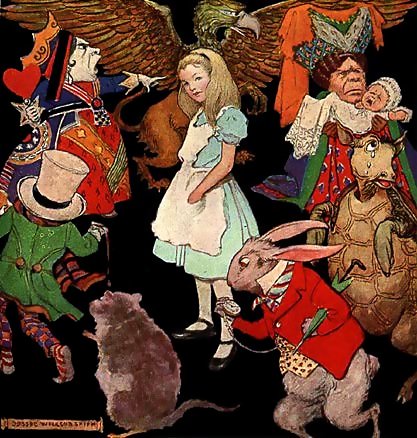
As many readers know, the main U.S. standard for taxonomies, thesauri, and other controlled vocabularies is ANSI/NISO Z39.19, Guidelines for the Construction, Format, and Management of Monolingual Controlled Vocabularies. The material on vocabulary displays covers types of vocabulary displays that might be unfamiliar. I’m guessing that some of these displays emerged as the result of technological limitations, and have persisted simply because of inertia. This seems to be the case with the flat format display, about which I’ve already written (see “Blind Alleys, Dead Ends, and Mazes”).
This also might be the case with the display practice described in Z39.19’s Section 8.4.3, Node Labels for Related Terms: “In order to bring closely related concepts together in the alphabetical array under a given term, related terms may be divided [grouped?] into categories that do not form part of a logical hierarchy. These related terms should then be identified by a node label.” What do we get here? A shallow, illogical hierarchy? Related terms without a useful hierarchy?
And then there’s Section 9.3.4.6, Faceted Display: “Some controlled vocabularies provide a display of the terms organized according to the broad categories or facets to which the term belongs. Facets may have a hierarchical arrangement as well so that narrower facets are arranged within broader categories.” And then again, there might not be a hierarchical arrangement. What then?
At best, we get a relatively flat list with very general groupings, as with the related terms display. At worst, perhaps, the faceted display might be associated with a thesaurus hierarchy. We get a display of categories that look like the top terms in a thesaurus hierarchy, but that actually obscure the hierarchy. Let’s dive into such a thesaurus, shall we?
Again, I’m going to pick on the U.S. Department of Education’s ERIC Thesaurus, which I’ve picked on before for the flat format displays used for its individual terms. To its credit, it dates back to 1964, but it’s showing its age. The main point of entry for browsing is the webpage that lists the main “categories”. It would be easy for you to assume that those categories are the top terms in the hierarchical structure of the thesaurus. (After all, it is a “thesaurus”, right?) But no. This vocabulary is something of a hybrid creature. As mentioned in Z39.19, Appendix C (at C.13, Faceted Displays), a faceted display “Provides a view of the vocabulary that is complementary to any strict hierarchical arrangement”. The categories look like they’re there to simplify navigation, but the hierarchy is nowhere in sight.
Picking at random – If you click on the category “Arts”, you’ll see a flat list of several terms. One of them is “Art History”. Click on “Art History”, and you’ll see that doesn’t have a narrower term, but it does have a broader term, “Intellectual History”. Okay, let’s travel back up to the top (not that we’ve traveled very far down). If you click on “Intellectual History”, you’ll discover that it’s in the category of “Humanities”, with the category “Arts” nowhere to be seen. “Intellectual History” also has a broader term, “History”, which in turn has two broader terms, neither of which is taking us back up to where we jumped in.
Try jumping in somewhere else. You’re likely to find the same kind of inconsistency on your way back up.
In Appendix C (at C.13, Faceted Displays), the Z39.19 standard warns that with a faceted display, it “Can be difficult for users to locate a specific term”. Yes, indeed!
Barbara Gilles, Taxonomist
Access Innovations, Inc.








